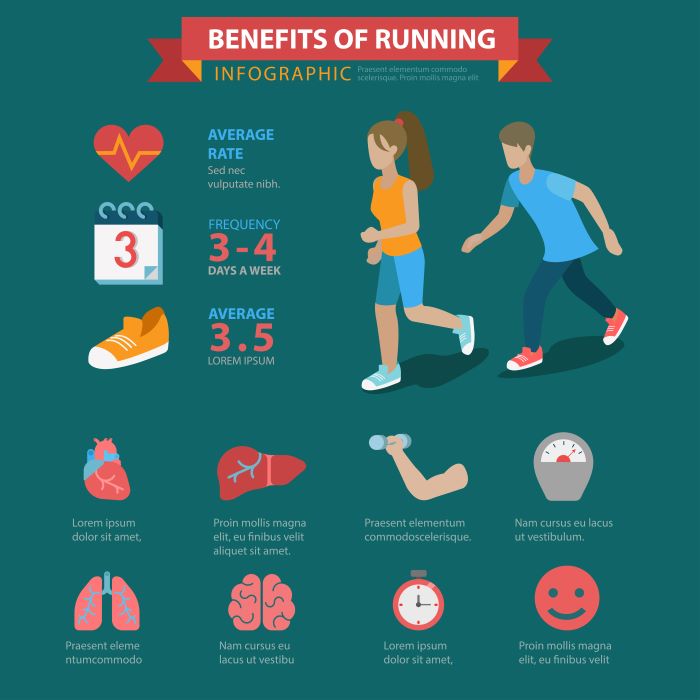When it comes to preparing for a half marathon, understanding the training requirements is vital for both new and experienced runners. The general consensus among running experts is that you should allow yourself at least 10 to 14 weeks of training, depending on your current fitness level and running experience.
For beginners, a gradual build-up is essential. Here are some key components to consider:
- Base Mileage: Aim to establish a solid base of running 3-4 times a week. Start with shorter distances, gradually increasing your mileage to prevent injuries.
- Long Runs: Incorporate a weekly long run, progressively increasing the distance. This helps your body adapt to the demands of longer races.
- Cross-Training: Engage in activities like cycling or swimming to enhance your cardiovascular fitness without over-stressing your running muscles.
- Rest and Recovery: Schedule rest days and listen to your body. Recovery is just as important as the training itself.
Additionally, consider your nutrition and hydration strategies, as they play a crucial role in your training regimen. Eating a balanced diet rich in carbohydrates, proteins, and healthy fats will fuel your runs effectively. Remember, consistency is key to successfully prepare for your half marathon.
For those seeking more guidance on how to tailor their training program, visit our website to learn more and get started today! Click here.
Factors Influencing Your Training Duration

Several factors can significantly influence how long you need to train to run a half marathon. Understanding these elements can help you tailor your training plan effectively:
- Current Fitness Level: Your baseline fitness plays a crucial role in determining your training duration. If you are starting from a sedentary lifestyle, you may need more time to build up your endurance compared to an individual who is already active.
- Running Experience: Experienced runners may only need a few weeks of training to prepare for a half marathon, while beginners might need a comprehensive 12-16 week program to build stamina and technique.
- Injury History: Previous injuries can affect your training schedule. If you have a history of running-related injuries, it’s essential to incorporate more recovery time and possibly consult a coach or physical therapist.
- Age: Age can impact recovery times and overall performance. Older runners may require additional time for training and recovery compared to their younger counterparts.
- Goal Setting: Your specific goals, whether to complete the race or achieve a personal best, will influence your training timeline. Setting realistic and achievable goals can help you determine how much preparation is necessary.
By considering these factors, you can create a more personalized training plan that aligns with your individual needs and enhances your chances of successfully completing a half marathon.
Beginner Training Plans for Half Marathon

For those new to running, embarking on a half marathon journey can be both exciting and daunting. A structured training plan is essential to build endurance and confidence. Here are some fundamental elements to include in a beginner training plan for a half marathon:
- Duration: Aim for a training period of 12 to 16 weeks to allow your body to adapt to the demands of longer distances.
- Weekly Mileage: Start with a comfortable weekly mileage and gradually increase it. A common approach is to increase your total mileage by no more than 10% each week to prevent injury.
- Long Runs: Designate one day each week for a long run. This should gradually increase in distance, reaching up to 10-12 miles before race day. Long runs are vital for building endurance.
- Cross-Training: Incorporate cross-training activities like cycling, swimming, or strength training to improve overall fitness and reduce the risk of injury.
- Rest Days: Allow for adequate rest and recovery. Rest days are crucial for muscle repair and preventing burnout.
A sample weekly plan might involve running three to four days per week, with cross-training and rest days interspersed. Adjust your plan according to your personal schedule and fitness level, and always listen to your body. This flexibility can make your training enjoyable and sustainable as you prepare for the challenge ahead.
Intermediate Tips for Half Marathon Preparation

Once you’ve mastered the basics of half marathon training, it’s time to elevate your preparation with some intermediate tips that can help you enhance your performance. These strategies are designed to build on your existing training routine, ensuring you’re ready to tackle the race with confidence:
- Incorporate Speed Work: Integrating speed workouts, like interval training or tempo runs, can significantly improve your pace. Aim for one speed session per week to challenge your cardiovascular system and build strength.
- Practice Race Pace: During your long runs, practice running at your target race pace. This not only helps you become comfortable with the speed you want to maintain on race day but also trains your body to handle the effort.
- Fueling Strategies: Experiment with different fueling options during your long runs. Whether it’s gels, chews, or electrolyte drinks, find what works best for you to maintain energy levels throughout the race.
- Strength Training: Incorporate strength training sessions into your weekly routine. Focus on core and leg strength to improve your running form and efficiency. This can also help prevent injuries.
- Mind Your Recovery: As you push your limits, prioritize recovery. Consider yoga, stretching, and foam rolling to aid muscle recovery and flexibility.
These intermediate tips will not only enhance your training experience but also prepare you mentally and physically for the half marathon. Embrace the challenge and enjoy the journey!
Nutrition and Recovery Strategies for Runners
Effective nutrition and recovery strategies are crucial components of a successful half marathon training plan. Proper fueling and recovery not only enhance performance but also ensure you’re ready for each training session. Here’s how to optimize both:
Nutrition Strategies
Fueling your body correctly can make a significant difference in your training outcomes. Consider these tips:
- Balanced Diet: Focus on a diet rich in whole foods, including fruits, vegetables, lean proteins, and whole grains. This provides essential vitamins and minerals to support your training.
- Carbohydrate Loading: In the days leading up to your race, increase your carbohydrate intake to maximize glycogen stores. This will help sustain your energy levels during the run.
- Hydration: Stay hydrated before, during, and after your runs. Aim for at least 8-10 cups of water daily, and consider electrolyte drinks during longer training sessions.
Recovery Strategies
Recovery is just as important as training. Implement these strategies to help your body heal:
- Rest Days: Allow your body to recuperate by scheduling regular rest days. This gives your muscles time to repair and grow stronger.
- Active Recovery: Engage in low-intensity activities like walking or cycling on recovery days to promote blood flow without adding strain.
- Sleep: Prioritize quality sleep, aiming for 7-9 hours per night. Sleep is vital for muscle recovery and overall performance.
By prioritizing your nutrition and recovery strategies, you’ll set yourself up for success as you prepare for your half marathon. Remember, taking care of your body is key to achieving your running goals!
Setting Realistic Goals for Half Marathon Success

Setting realistic goals is essential for achieving success in your half marathon journey. Goals provide motivation, structure, and a clear path to follow. Here’s how to create effective goals:
Understand Your Current Fitness Level
Before setting goals, assess your current fitness level. Consider factors such as:
- Running Experience: Are you a beginner, or do you have previous running experience? This will influence how you set your goals.
- Current Distance: What is the longest distance you can comfortably run? This will help in determining your race readiness.
- Injury History: If you have a history of injuries, be cautious when setting ambitious targets.
SMART Goals
Utilize the SMART criteria to formulate your goals:
- Specific: Clearly define what you want to achieve, e.g., “I want to run a half marathon in under 2 hours.”
- Measurable: Set quantifiable benchmarks to track your progress.
- Achievable: Ensure your goals are realistic based on your current fitness level.
- Relevant: Your goals should align with your overall fitness objectives.
- Time-Bound: Set a deadline for your goals to maintain focus and urgency.
Stay Flexible
While it’s important to set goals, being flexible is equally crucial. Life can throw unexpected challenges your way, so be prepared to adjust your goals as needed without losing sight of your overall objectives.
Setting realistic goals not only boosts your confidence but also enhances your training experience. Visit our website to learn more and get started today! Click here.


